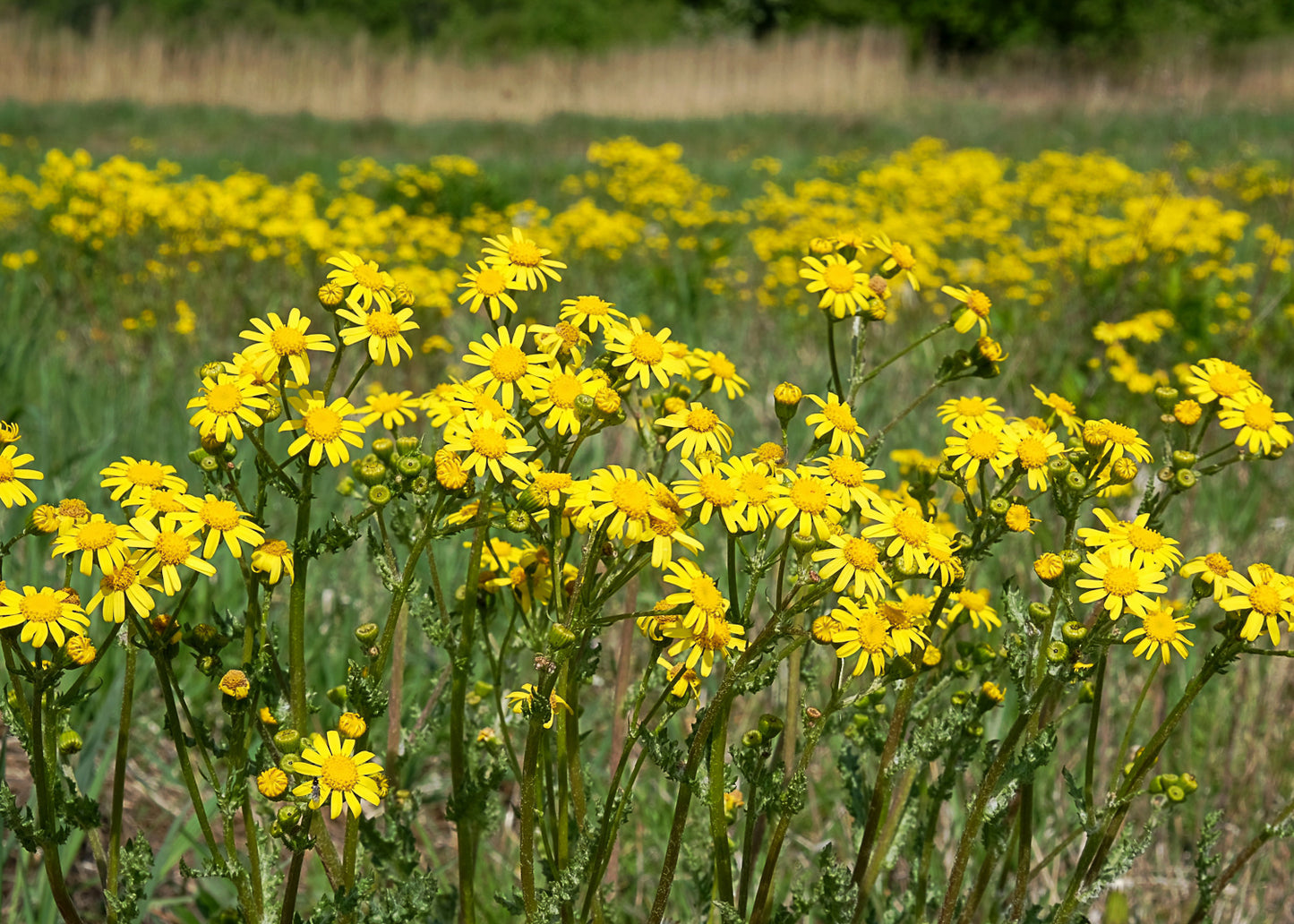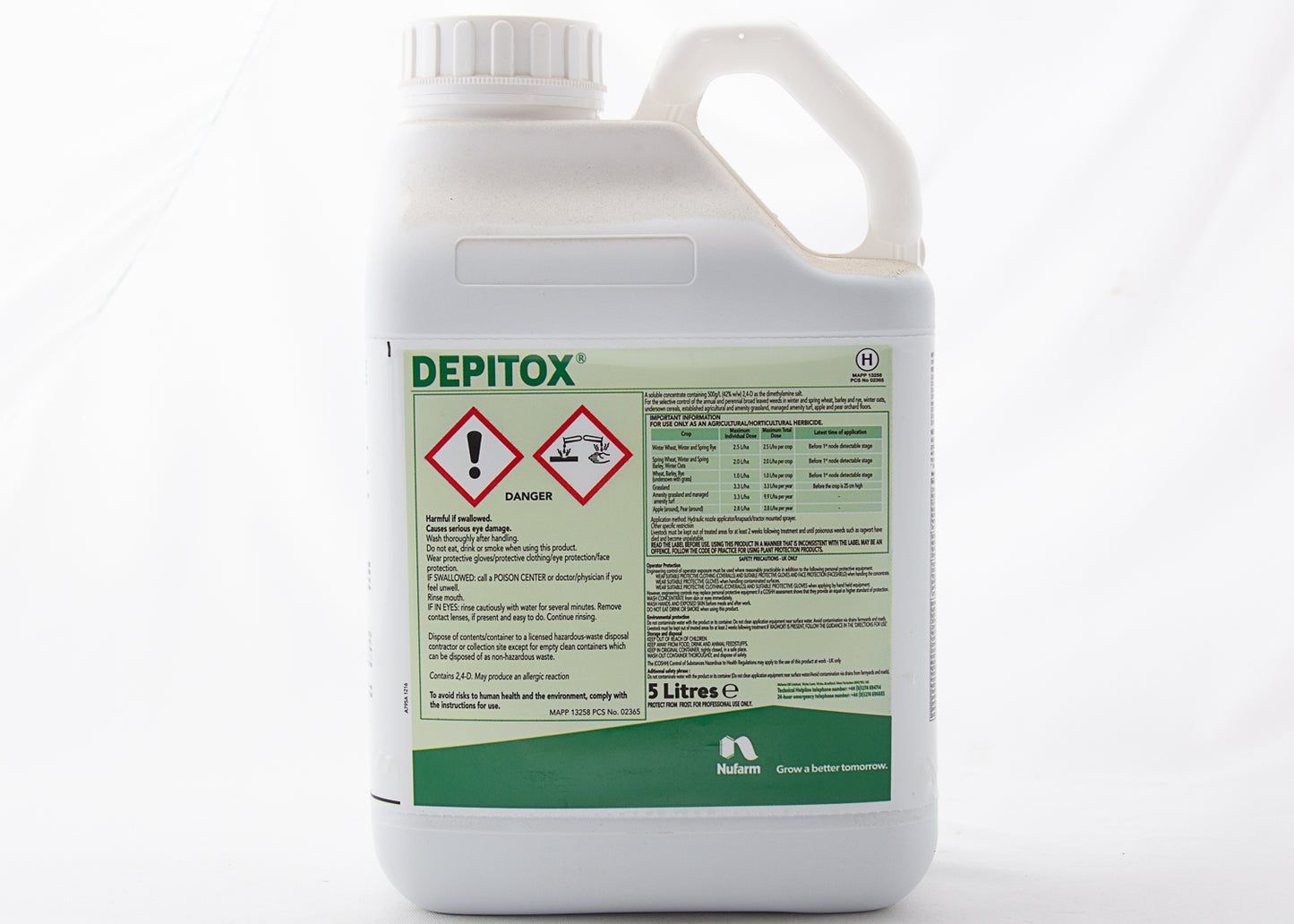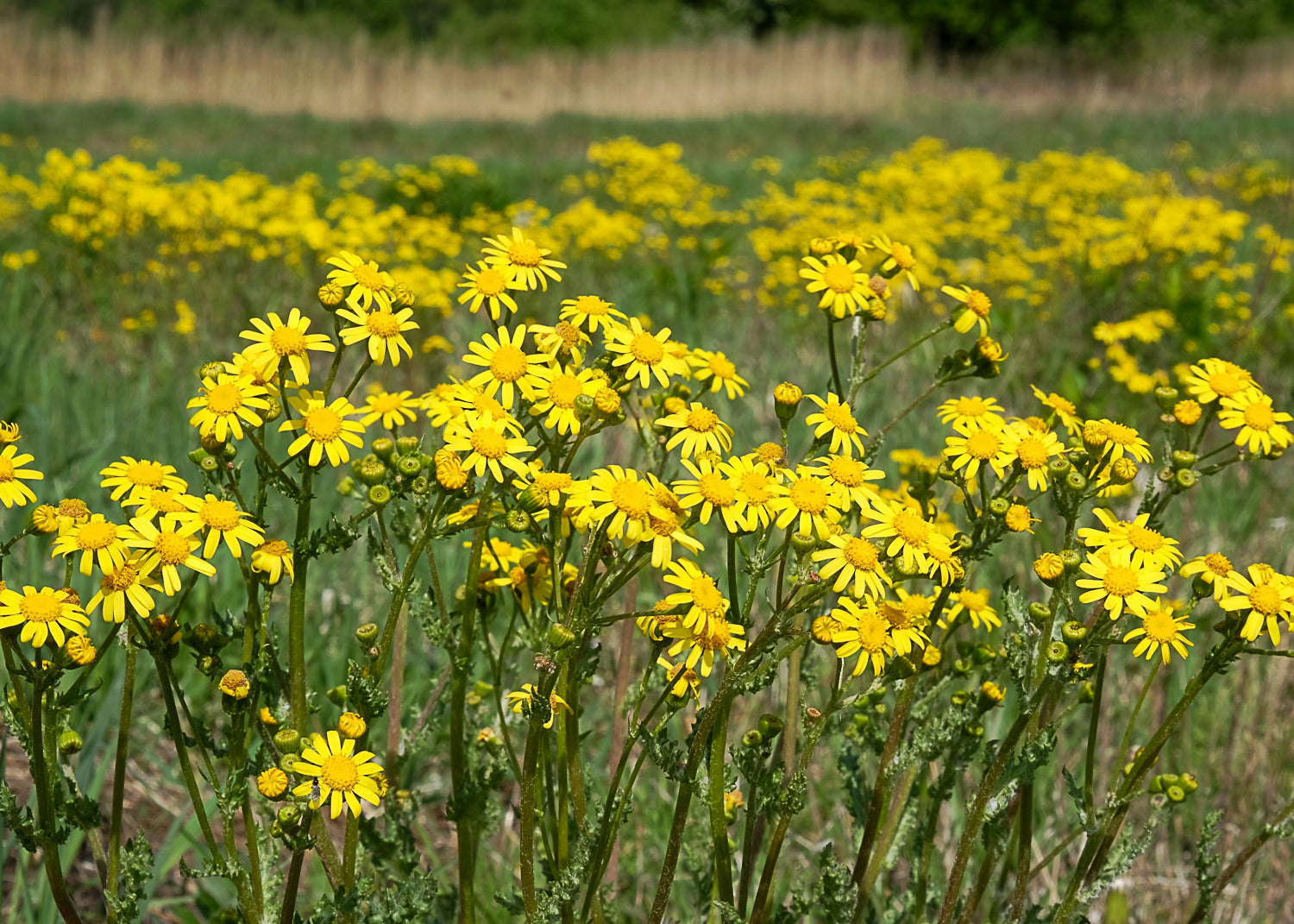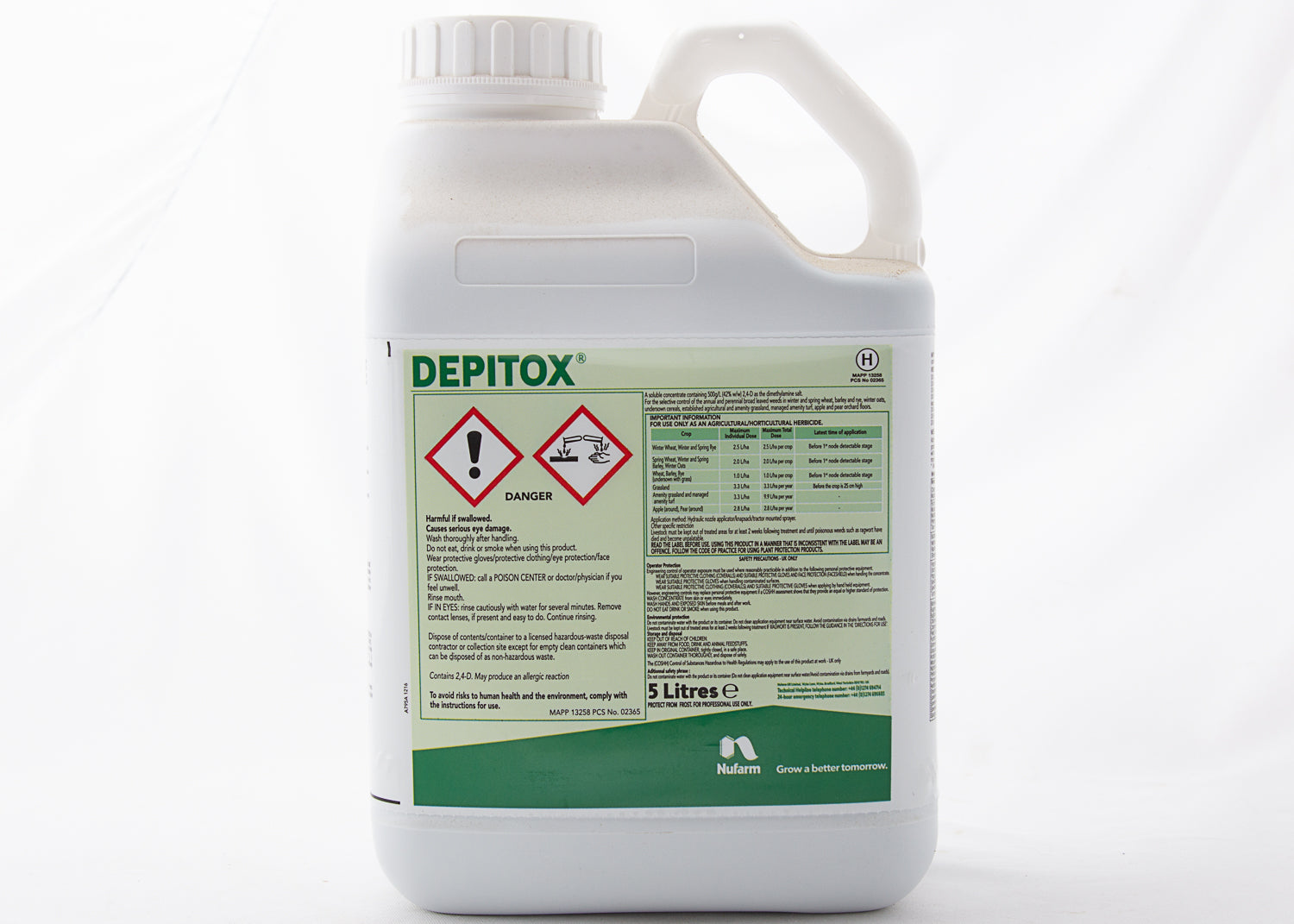Depitox
Depitox
SKU:1982
Couldn't load pickup availability
Out of stock
View full details

Collapsible content
Product Description
Depitox can be used to control a wide range of annual or perennial plants, including Ragwort. It is suitable for use on amenity turf and grassland such as golf courses, verges and playing fields.
For the selective control of annual and perennial broad leaved weeds in winter and spring wheat, barley and rye, winter oats, under sown cereals, established agricultural and amenity grassland, managed amenity turf, apple and pear orchard floors.
Approved for professional use in agricultural grassland, amenity grassland and turf.
Variable water volume depending on grass length
Fast acting
Livestock must be kept out of treated areas for at least two weeks following treatment and until poisonous weeds such as ragwort have died
and become unpalatable.
A soluble concentrate containing 500 g/l (42% w/w) 2,4-D as the dimethylamine salt.
KEY BENEFITS
Controls many important broad-leaf weeds in cereals including:
- Charlock, Common pansy, Fat hen and Shepherd’s purse
- Use on grass floors under orchards
- Can be used in a wide range of cereal crops
- Controls many key weeds in grassland
- Tank mix recommendation for Ragwort control
- Non-ALS mode of action to help manage herbicide resistance
When it comes to treating ragwort, however beautiful it may be, the plant contains toxic chemicals, called pyrrolizidine alkaloids, which can lead to the death of horses and cattle if consumed. The animals will naturally avoid ragwort when grazing, but they cannot detect ragwort that’s present when contaminated with their hay, so it is
important to get rid of the plant altogether. The toxic effect that ragwort holds, builds up over time, leading to irreparable damage to the liver. This means that little continuous consumption is equally as deathly as consuming a large quantity at once.
The ragwort plant is most commonly seen from spring to autumn in neglected or overgrazed grasslands. The best time for treatment is late
April or May. However, it is not safe for livestock to graze for at least 2 weeks after treatment as the plants can remain poisonous, so weeds must be fully decayed before livestock is advised to roam on the treated areas.
Each 5 litre pack will give a coverage of up to 17,000m2 (1.7 hectare). Celadon should be mixed with water and application is best made with a knapsack sprayer or, if treating a very large area, a vehicle mounted boom sprayer. You will find a number of knapsack sprayers on our sprayers collection or a more extensive range can be found on our bestsprayers website.
Should you have any questions regarding the use of this product then please CONTACT US.
Care must be taken when using this product so all instructions and directions should be followed. Please also consider the environment, not just for the use and disposal of herbicides but also where you are using them. Unwanted weeds are food for many types of insect and other animals so please consider only treating areas that you feel is important to treat. Maybe leave borders, or more hidden areas, untreated. This small change will save you money and help the insect population.
Product Specification
Apply as 2.8-3.3L/Ha
For best results, dilute as 20ml per 1 litre water
Max 2 treatments per year - Apr - Oct
Allow 4-6 weeks between treatments
Weeds will begin to show signs of decay 2 weeks after treatment
Take care:
Keep livestock off treated area for at least 14 days - until weeds have become unpalatable
It is advised to keep livestock away from area 1-2 weeks before treatment to allow growth
Do not sow seeds in treated area for at least 3 months
Not suitable for newly established grass less than one year old
Not intended for domestic/unsupervised use
For Ragwort - best treated at rosette stage, repeat application may be required
Weed species:
Apply when the majority of annual weeds are at the seedling* stage. For the control of perennial weeds in established grassland, the best results are obtained if spraying is carried out shortly before flowering. Whilst spraying at this late stage will not give complete control of annual weeds, it may effectively check most of the species mentioned. A second application may be necessary to provide an adequate level of weed control on amenity grassland and managed amenity turf.
* Seedling = Fully expanded cotyledons to 2 expanded true leaves
FAQs
How is Depitox best applied?
With this type of product, the best application method is to spray. Care should always be taken to ensure that the operator is protected but also that nature is protected so do not spray when the wind is strong or strong enough to cause spray drift and possible damage to surrounding areas. Also, be sure to follow the directions for the disposal of the product when cleaning your sprayer. It is very important that you do not dispose of excess solution into the drains so only mix the amount you require and use it all on the area, being treated, including any flushing solution.
When should I use Depitox?
Use a herbicide when the unwanted plants are in their growing phase. Generally, this is between the months of March to October but not during very hot or prolonged dry spells. Celadon is best used when the soil contains moisture, not when it is baked hard.

